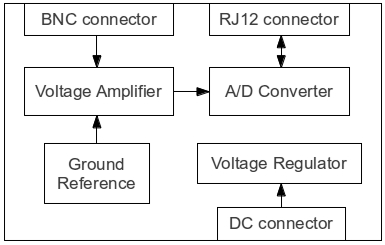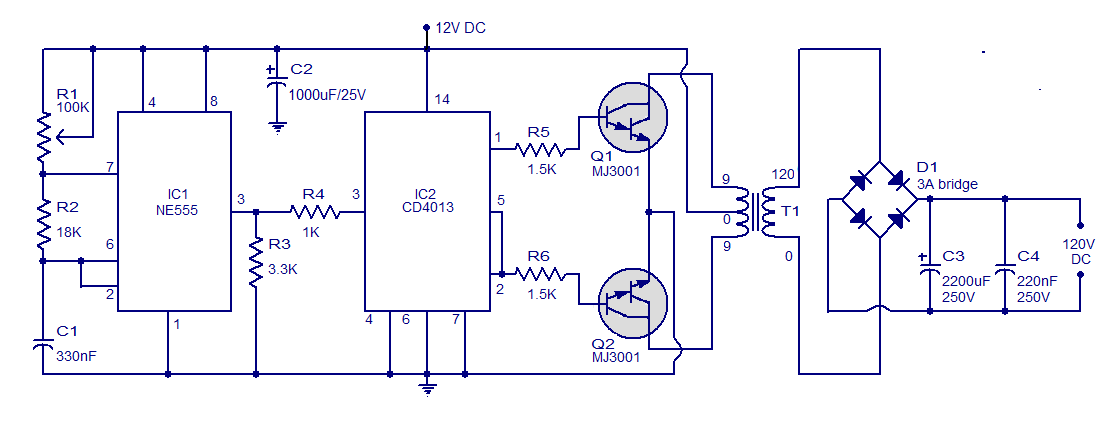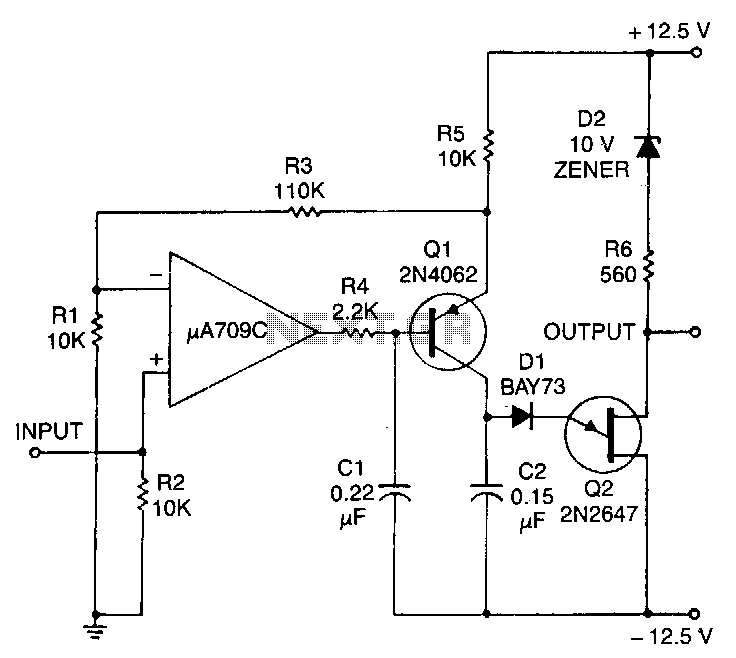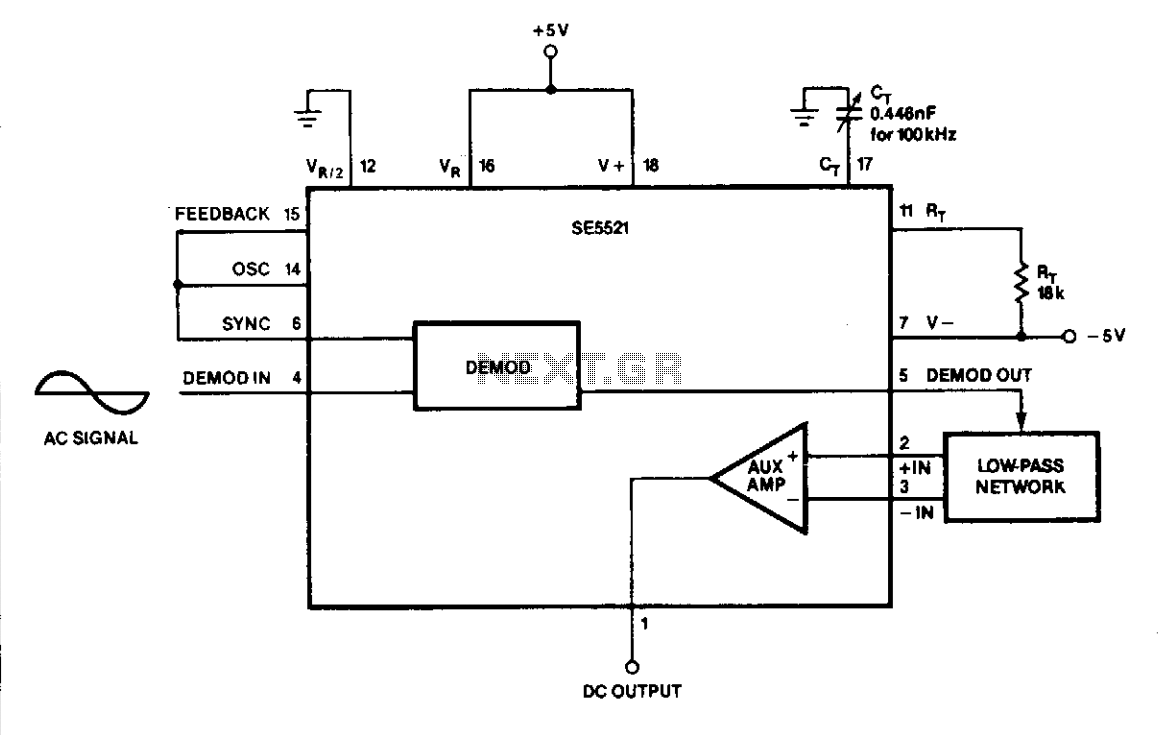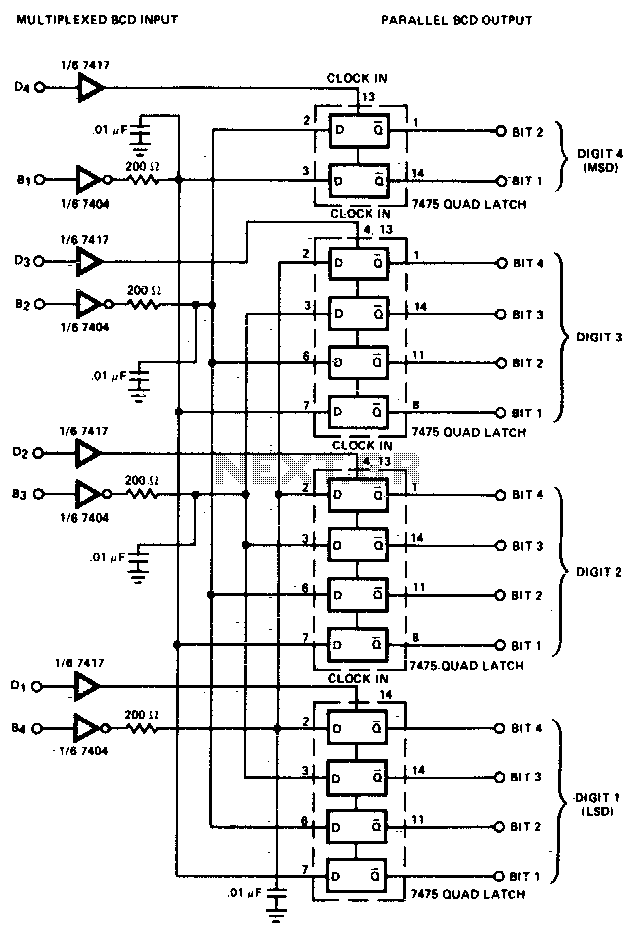
Sawtooth Converter
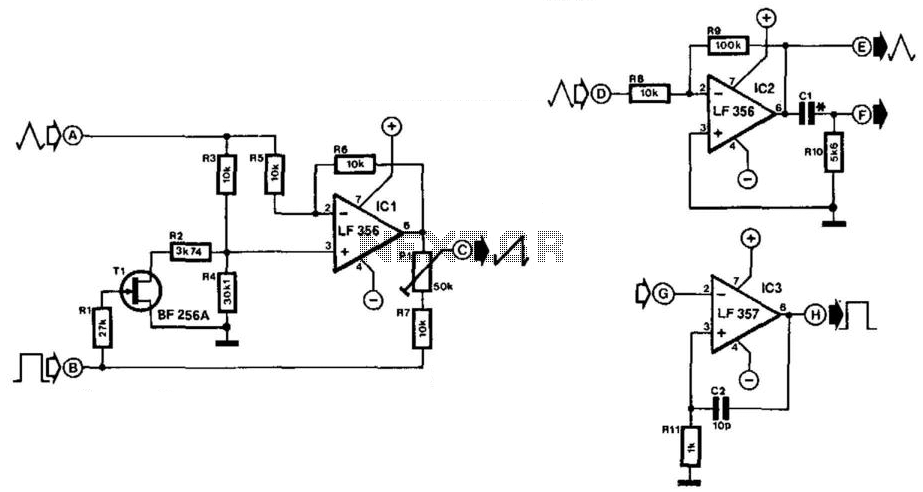
Simple function generators typically produce sinusoidal, rectangular, and triangular waveforms, but rarely generate sawtooth waveforms. The circuit depicted in Fig. 21-4(a) generates a sawtooth signal from rectangular and triangular signals. The quality of the sawtooth output is influenced by the linearity of the triangular signal, the slope of the rectangular signal edges, and the phase relationship between the two input signals. This conversion is performed by IC1. The conversion of the triangular signal at input A by IC1 is contingent upon the state of transistor T1, which is controlled by the rectangular signal at input B. The output from the operational amplifier is a sawtooth waveform (refer to Fig. 21-4(b)), with its trailing edge inverted. The frequency of this output signal is twice that of the input signals. By raising the DC level of each inverted edge sufficiently, the lower level of that edge can align with the higher level of the preceding edge, producing a sawtooth signal that has the same frequency as the input signals but with double the peak value. This DC level adjustment is accomplished by adding an input to the output of IC1 through resistor R7 and potentiometer P1, with the potentiometer preferably being of the multiturn type. Resistors R2 and R4 are specified as 1% tolerance types. In scenarios where a rectangular signal is not available or its peak value is inadequate, auxiliary circuits illustrated in Figs. 21-4(c) and 21-4(d) can be utilized. Figure 21-4(c) amplifies the triangular signal at input A by a factor of 10. A differentiating network composed of capacitor C1 and resistor R10 generates rectangular pulses from the amplified triangular signal, which are available at output F. These pulses are then shaped into rectangular signals with peak values equivalent to the supply voltage by the circuit in Fig. 21-4(d). Capacitor C2 enhances the edge slope and can be omitted for low-frequency signals. The converter is capable of producing sawtooth signals across a frequency range of 15 Hz to 15 kHz. When using the auxiliary circuits, capacitor C1 must be appropriately chosen to match the frequency of the sawtooth signal, with its value ranging from 2 nF to 100 pF. The power supply for all circuits can range between ±10 V and ±15 V, with each operational amplifier drawing a current of 4 to 6 mA.
The circuit operates as a versatile sawtooth waveform generator, leveraging the properties of triangular and rectangular signals to produce a high-quality output. The use of operational amplifiers and FETs allows for precise control over the waveform characteristics, including frequency and amplitude. The feedback mechanism involving the potentiometer ensures that the output signal can be finely tuned to meet specific application requirements.
The auxiliary circuits provide flexibility in generating the required input signals, accommodating situations where the primary input signals may not be available or suitable. The amplification stage enhances the triangular signal, ensuring that it can be effectively converted into rectangular pulses. The differentiating network plays a critical role in shaping the output, transforming the amplified triangular waveform into a rectangular format that can be further processed.
Overall, this circuit design is suitable for various applications requiring sawtooth signals, such as in signal processing, waveform generation for testing, and other electronic applications where precise waveform characteristics are essential. The specified frequency range and power supply options make it adaptable to a wide range of electronic systems. Simple function generators normally provide sinusoidal, rectangular, and triangular waveforms, but seldom a sawtooth. Th e circuit in Fig, 21-4(a) derives a sawtooth signal from a rectangular and triangular signal. Its quality depends on the linearity of the triangular signal, the slope of the edges of the rectangular signal and the phase relationship between the rectangular and triangular signals. The conversion is carried out in IC1. Whether the triangular signal at input A is converted or not by IC1 depends on the state of Tl. This FET is controlled by the rectangular signal at input B. The signal at the output of the op amp is a sawtooth (see Fig. 21-4(b)) whose trailing edge is inverted. The frequency of this signal is double that of the input signals. If in this state, the dc level of each inverted edge is raised sufficiently to make the lower level of that edge coincide with the higher level of the preceding edge, a sawtooth signal of the same frequency (but double the peak value of the input signals) is obtained.
The dc level is raised by adding input to the output of IC1 via R7 and PI. The preset should preferably be a multiturn type. Resistors R2 and R4 are 1% types. If a rectangular signal is not available, or if its peak value is too small, the auxiliary circuits (shown in Figs. 21-4(c) and 21-4(d)) will be found useful. Figure 21-4(c) amplifies the triangular input at A by 10. Differentiating network C1/R10 derives rectangular pulses from the amplified triangular signal and these are available at F.
The pulses at F are shaped by the circuit in Fig. 21-4(d) to rectangular signals that have the same peak value as the supply voltage. Capacitor C2 increases the slope of the edge; it can be omitted for low-fre-quency signals. The converter provides sawtooth signals over the frequency range of 15 Hz to 15 kHz. If the auxiliary circuits are used, capacitor CI must be compatible with the frequency of the sawtooth signal (its value lies between 2 nF and 100 pF). The supply for all circuits can be between ± 10 V and ± 15 V. Each op amp draws a current of 4 to 6 mA.
The circuit operates as a versatile sawtooth waveform generator, leveraging the properties of triangular and rectangular signals to produce a high-quality output. The use of operational amplifiers and FETs allows for precise control over the waveform characteristics, including frequency and amplitude. The feedback mechanism involving the potentiometer ensures that the output signal can be finely tuned to meet specific application requirements.
The auxiliary circuits provide flexibility in generating the required input signals, accommodating situations where the primary input signals may not be available or suitable. The amplification stage enhances the triangular signal, ensuring that it can be effectively converted into rectangular pulses. The differentiating network plays a critical role in shaping the output, transforming the amplified triangular waveform into a rectangular format that can be further processed.
Overall, this circuit design is suitable for various applications requiring sawtooth signals, such as in signal processing, waveform generation for testing, and other electronic applications where precise waveform characteristics are essential. The specified frequency range and power supply options make it adaptable to a wide range of electronic systems. Simple function generators normally provide sinusoidal, rectangular, and triangular waveforms, but seldom a sawtooth. Th e circuit in Fig, 21-4(a) derives a sawtooth signal from a rectangular and triangular signal. Its quality depends on the linearity of the triangular signal, the slope of the edges of the rectangular signal and the phase relationship between the rectangular and triangular signals. The conversion is carried out in IC1. Whether the triangular signal at input A is converted or not by IC1 depends on the state of Tl. This FET is controlled by the rectangular signal at input B. The signal at the output of the op amp is a sawtooth (see Fig. 21-4(b)) whose trailing edge is inverted. The frequency of this signal is double that of the input signals. If in this state, the dc level of each inverted edge is raised sufficiently to make the lower level of that edge coincide with the higher level of the preceding edge, a sawtooth signal of the same frequency (but double the peak value of the input signals) is obtained.
The dc level is raised by adding input to the output of IC1 via R7 and PI. The preset should preferably be a multiturn type. Resistors R2 and R4 are 1% types. If a rectangular signal is not available, or if its peak value is too small, the auxiliary circuits (shown in Figs. 21-4(c) and 21-4(d)) will be found useful. Figure 21-4(c) amplifies the triangular input at A by 10. Differentiating network C1/R10 derives rectangular pulses from the amplified triangular signal and these are available at F.
The pulses at F are shaped by the circuit in Fig. 21-4(d) to rectangular signals that have the same peak value as the supply voltage. Capacitor C2 increases the slope of the edge; it can be omitted for low-fre-quency signals. The converter provides sawtooth signals over the frequency range of 15 Hz to 15 kHz. If the auxiliary circuits are used, capacitor CI must be compatible with the frequency of the sawtooth signal (its value lies between 2 nF and 100 pF). The supply for all circuits can be between ± 10 V and ± 15 V. Each op amp draws a current of 4 to 6 mA.
